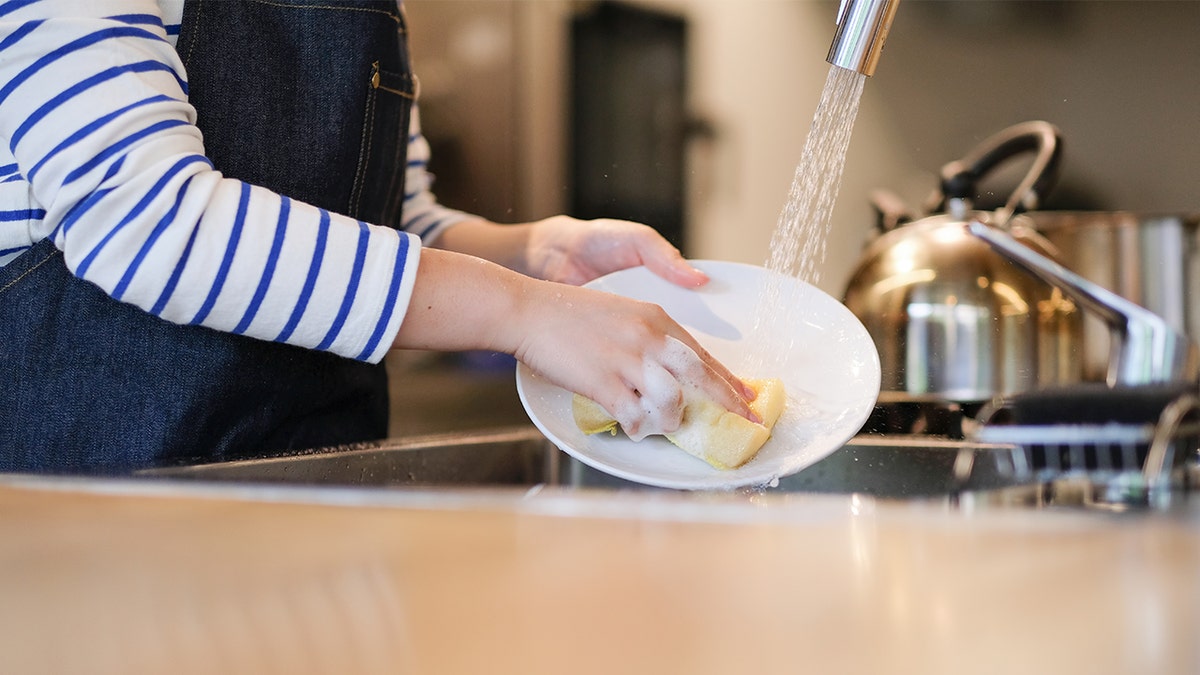
Washing dishes by hand isn't as good an idea as it might seem. (iStock)
The dishwasher is like a magical kitchen creature: feed it dirty dishes and you’ll receive sparkling clean ones in exchange. It’s almost too good to be true, so it must save water to wash dishes by hand, right? It certainly feels like you’d be doing a solid for the environment, but it’s actually more eco-friendly to put down the sponge and use your dishwasher.
Dishwashers are way more water efficient than your faucet!
It turns out that using your dishwasher is a thousand times better than washing dishes by hand. According to the EPA, the standard flow of a kitchen faucet is 2.2 gallons per minute. That’s a lot of water! You’d use an estimated 27 gallons by washing an entire dishwasher load by hand.
RELATED: 7 SECRETS TO LOADING YOUR DISHWASHER THE RIGHT WAY
In contrast, ENERGY STAR® dishwashers use no more than 5.5 gallons of water for the entire load (and some of them use as little as 3 gallons). Even older dishwashers only use 10 to 15 gallons per cycle, which is still half as much water as handwashing. New dishwashers also have sensors that detect how much grime comes off the dishes, using only as much water as required until the water runs clear. You’d have to you wash an entire load of dishes in less than 2.5 minutes to compete with that.
The dishwasher sanitizes your dishes, too.
It’s not just about water conservation, either. The dishwasher can heat your water to extremely hot temperatures–from 140° F to 155° F–which sanitizes the dishes as they’re washed. Even while wearing gloves, I don’t think I could handle water that hot. These high temperatures mean you can stop wasting time (and water) by pre-rinsing your dishes in the sink. Just give them a quick scrape into the trash to remove excess debris and let the dishwasher handle the rest.
No matter how much you use the dishwasher, there will always be items you have hand wash—like your cast iron skillets, that expensive Chef’s knife and any wooden utensil or cutting board. But go ahead and be lazy for the rest of the time: load that dishwasher up, guilt-free. Just make sure to only run it when it’s full. Since it uses the same amount of water regardless of its contents, you’ll save money by loading it up.